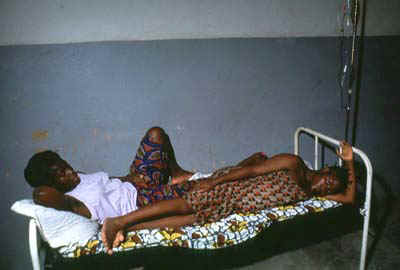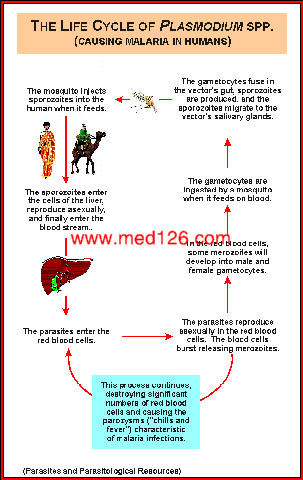
1. Malaria is one of the five major parasitic diseases in our country. Each year, more than 1,000,000 children die of malaria in Africa.

Caption: Two women recovering from malaria at Laquintinie hospital in Douala, Cameroon. Patients often have to share beds.

Caption:Navrongo hospital,Ghana: A mother waits patiently in the malaria ward by the bedside of her young child who is recovering from malaria.
2. Four species affecting humans:
P. vivax(P.v) causes benign tertian malaria.
P. falciparum(P.f) causes malignant tertian malaria.
P. malariae(P.m) causes quartan malaria.
P. ovale(P.o) causes tertian malaria.
3. taxonomy: Protista>Protozoa>Apicomplexa>Sporozoa>Eucoccidiida>Plasmodidae>Plasmodium
Life Cycle

The malaria parasite life cycle involves two hosts. During a blood meal, a malaria-infected female Anopheles mosquito inoculates sporozoites into the human host. After initial replication in the liver (exoerythrocytic schizogony), the parasites undergo asexual multiplication in the erythrocytes (erythrocytic schizogony). Multiplication of the blood stage parasites is responsible for the clinical manifestations of the disease. In the blood, some parasites differentiate into sexual erythrocytic stages (gametocytes). The gametocytes, after ingestion by an Anopheles mosquito during a blood meal, undergo a sporogonic cycle yielding sporozoites. Inoculation of the sporozoites into a new human host perpetuates the malaria life cycle.
Of note, in P. vivax and P. ovale, a dormant stage (hypnozoites) can persist in the liver and cause relapses by invading the bloodstream weeks, or even years later.